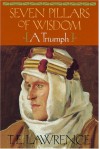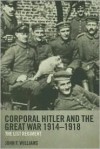Currently reading
FROM KING TO KING or 'BEYOND THE REPUBLIC'

Of all the non-fiction I've read thus far this year, this book, "THE KING'S REVENGE", has given me a full and complete education about the events surrounding both the trial and execution of Charles I of England in 1649 and the 1660 Restoration with his son Charles II as King.
Charles I was one of the last European monarchs who believed in the notion of the 'divine right of Kings' and sought to rule as an autocrat without having to answer to Parliament. This proved to be his undoing and led to 2 Civil Wars being fought between 1642 and 1648, pitting the Royalists against the Parliamentarians (who were also known as the 'Roundheads' for their rather austere hairstyle and decidedly sober and strict religious beliefs and lifestyle). This book goes on to present the reader with views of England during its decade without a monarch (from 1649 to 1660) under a republican form of government --- first as a Commonwealth and then a Protectorate. This was a time during which Charles II, living in exile in Europe, struggled to keep the royalist cause alive. There were a number of plots hatched, both within England and from Europe to kill republican leaders who had a direct hand in the trial and execution of Charles I. By and large, these plots came to naught. But following the Restoration, it was interesting to learn about the extensive efforts made by Charles II and various members of his government to put on trial those 'regicides' (i.e. those persons who could be directly implicated in having tried for treason and killed Charles I) who remained in England --- as well as launching attempts to capture, kidnap, or assassinate the ones that got away, either to Europe or America.
Prior to reading this book, I had formed the impression that the Restoration had taken place with no blood being spilled, that the English people were dissatisfied with living under republican rule and were eager (following the death in 1658 of Oliver Cromwell, the Lord Protector and great military leader of the Parliamentary New Model Army) to have the monarchy restored. Well, in reality it wasn't quite like that, though royalist sentiment remained strong in the country throughout the 1650s. So, even after Charles II returned to England as King, he was fearful of being overthrown and spent the first decade of his rule bringing to justice as many people as possible who were associated directly or indirectly (sometimes, he went a bit too far in his pursuit of "justice" and netted persons who were, in truth, innocent) with his father's trial and execution.
For anyone with an interest in general history or the British monarchy, this is the book for YOU.
 1
1













